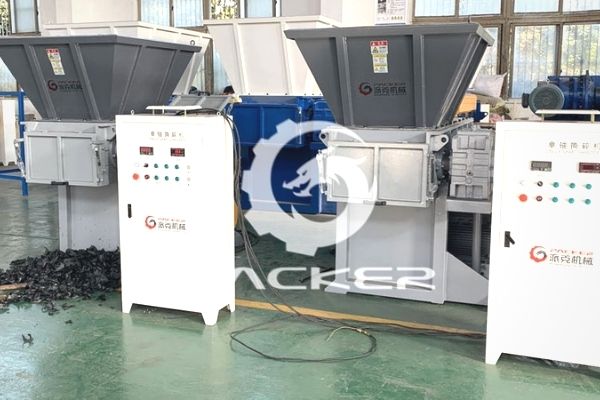 English
English Español
Español  Português
Português  русский
русский  Français
Français  日本語
日本語  Deutsch
Deutsch  tiếng Việt
tiếng Việt  Italiano
Italiano  Nederlands
Nederlands  ภาษาไทย
ภาษาไทย  Polski
Polski  한국어
한국어  Svenska
Svenska  magyar
magyar  Malay
Malay  বাংলা ভাষার
বাংলা ভাষার  Dansk
Dansk  Suomi
Suomi  हिन्दी
हिन्दी  Pilipino
Pilipino  Türkçe
Türkçe  Gaeilge
Gaeilge  العربية
العربية  Indonesia
Indonesia  Norsk
Norsk  تمل
تمل  český
český  ελληνικά
ελληνικά  український
український  Javanese
Javanese  فارسی
فارسی  தமிழ்
தமிழ்  తెలుగు
తెలుగు  नेपाली
नेपाली  Burmese
Burmese  български
български  ລາວ
ລາວ  Latine
Latine  Қазақша
Қазақша  Euskal
Euskal  Azərbaycan
Azərbaycan  Slovenský jazyk
Slovenský jazyk  Македонски
Македонски  Lietuvos
Lietuvos  Eesti Keel
Eesti Keel  Română
Română  Slovenski
Slovenski  मराठी
मराठी  Srpski језик
Srpski језик
Plastic crushing process
2021-08-04
The shredder has always played an essential supporting role in the traditional plastic industry, and it has become one of the protagonists in plastic recycling. The operating conditions of the pulverizer have a significant impact on the production capacity of the regeneration production line, the rate of raw material consumption, the efficiency of electricity use, and the cost of maintenance and repair.
Plastic crushing process
The crushing process includes the crusher body and the feeding and discharging conveying equipment. To protect the crusher, metal removal or metal detection facilities are sometimes added to the feeding facility to remove metal objects that may damage the crusher and affect product quality;
If the conveying of the discharged material is dry crushing, the air is used as the power for giving. The required facilities include high-pressure conveying blowers, conveying ducts, and traps (Sykeron). If it is wet crushing (inject water into the hopper to crush the crusher), a screw conveyor with a drain net is required.
Wet crushing has two advantages.
1. It is particularly advantageous for processing recycled plastics. Cutting with water can cool the thermal stress generated by friction and prolong the cutting life of the tool;
2. It can partially clean the plastic.
But there are also two minor disadvantages: the manufacturing and maintenance costs of wet-type discharging facilities are slightly higher; compared with the structural type of shredder, the capacity of wet-type is somewhat lower than that of dry-type.
Structural design of plastic crusher
There will be differences according to different plastic types, and the choice of blade material also varies with varying materials of plastic. Of course, the above-mentioned prerequisite is that there are requirements for the efficiency of the crushing process. Otherwise, any crusher is more or less effective for processing any plastic.
The structure of the shredder is mainly based on the knife shaft, and the body is adjusted with the form of the knife shaft. As for other accessories, it changes with the convenience of production. There are three common types of representative cutter shafts: hob-type shafts, full-knife shafts, and claw-knife shafts.
1. Hob type-a a wide range of uses, suitable for containers, frames, tubes or other small and medium-sized plastics, and the thickness of a single layer is not more than 10 mm.
2. All-knife type-suitable for thin plastics, such as bags, sheets, films, ropes, or continuous rolls of plastic.
3. Claw knife type-suitable for thick plastics such as modules, thick-walled tubes, and thick plates.

Factors affecting the capacity and safety of the crusher
The material and heat treatment process of the blade of the crusher are factors that affect the productivity and safety of the crusher. Unsuitable material selection or improper heat treatment will shorten the service life of the blade, require frequent maintenance, or cause the edge to crack, causing the crusher to suffer Serious injury. The materials often used as the blades of shredders are as follows:
1. High carbon steel
After the general heat treatment furnace process, the hardness can be improved, but the brittleness is also improved, and the wear resistance is not good. The only advantage is the low price. It is suitable for crushing some plastics with low material strength, such as PS, PP, LDPE or foamed soft plastics that do not require cutting precision.
2. High-speed steel
If the heat treatment process of vacuum nitriding is used, better blade characteristics will be obtained, but when the hardness of the heat treatment control is slightly higher, the phenomenon of blade chipping will occur. It is an intermediate-level knife-making material. It is suitable for crushing some medium-strength plastics, such as HDPE, PET, nylon, etc.
3. Die steel
Only the heat treatment process of vacuum nitriding can exert its characteristics. Its wear resistance is higher than that of high-speed steel. Although the unit price is higher than that of high-speed steel, the prolonged cutting life makes the total benefit still higher than that of high-speed steel. In addition, the die steel has the characteristics of not being easy to crack and break, which has more guarantees for the quality and safety of the final product. Suitable for crushing medium and high-grade plastics, such as PET, nylon, RPP, ABS, PC, etc.
4. Super hard alloy (tungsten carbide)
Cemented carbide has high hardness and high wear resistance, which are the characteristics required by the blade. Because the unit price of the material is high and cannot withstand bending stress, high carbon steel is used as the blade body, and the cemented carbide is the blade when manufacturing. , Welded with copper alloy as a whole. The cross-section of the material used for the edge is about 10 mm x 3 mm, and it does not require a too complicated heat-treatment process. It has a significant advantage in manufacturing costs. The manufacturing price is close to or even lower than that of high-speed steel.
Although it seems to have many advantages, it also has a fatal disadvantage, that is, it is very brittle. When it hits complex foreign objects, such as metal or rocks, it will crack and fall off.



